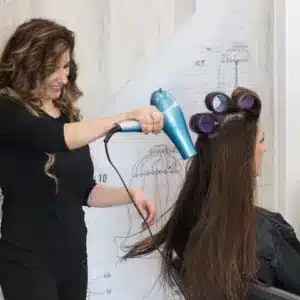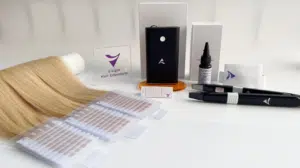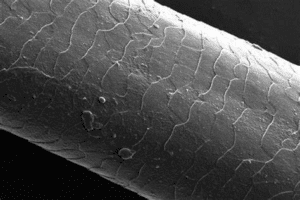Clients ask for “permanent” hair. Confusion hurts expectations and margins. Clear terms protect your brand, reduce rework, and keep clients booked on a healthy maintenance cycle.
Hair extensions are not permanent. In salon practice, “permanent” means semi-permanent methods that wear for weeks or months, then need move-ups or removal. Results depend on method, material quality, mapping, and aftercare.
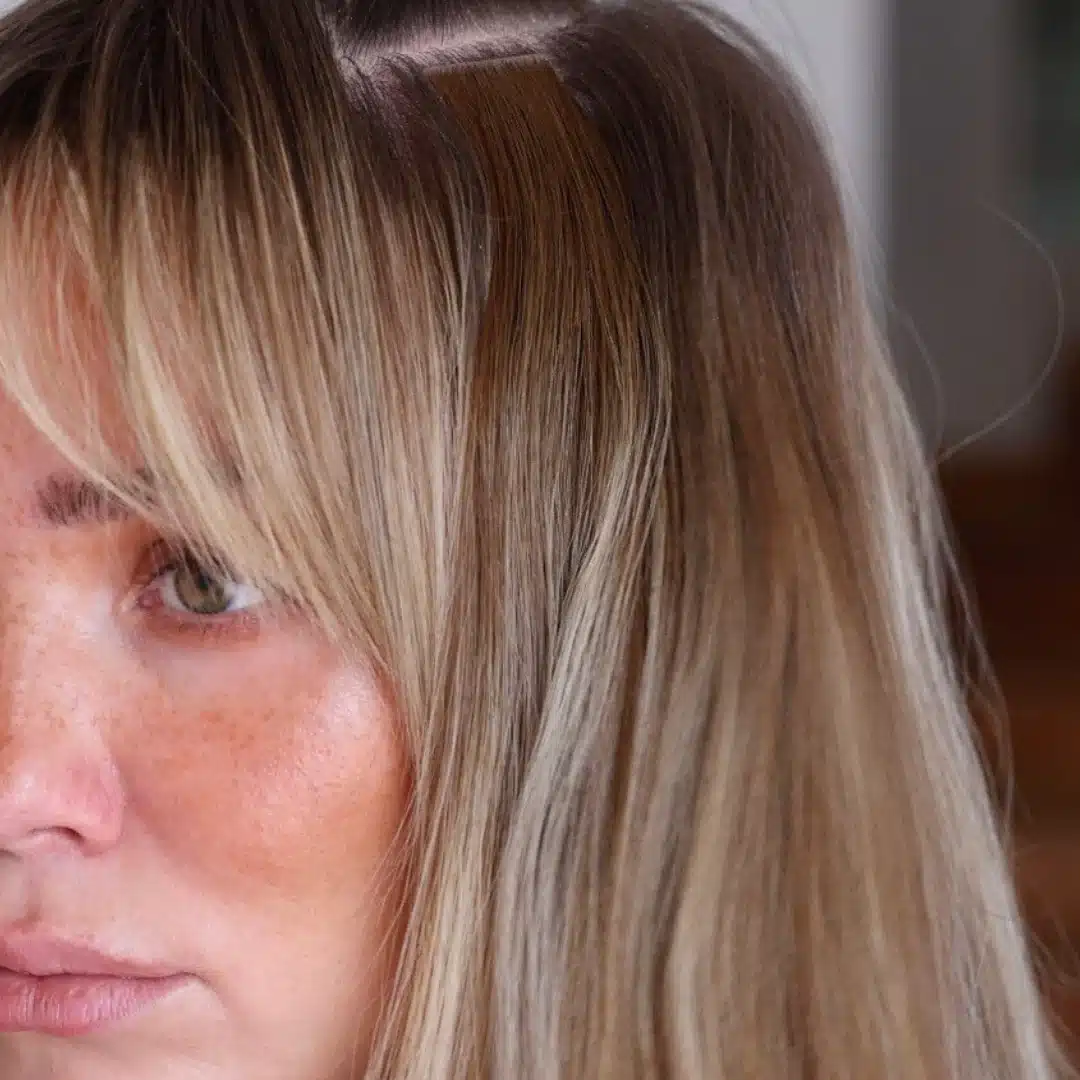
This guide explains what “permanent” really means, which systems qualify, how long they stay on the head, how long the hair asset lasts across reuses, and how to extend lifespan with simple salon SOPs.
are extensions permanent?
Clients hear “permanent” and expect zero appointments. That creates disputes. Tidy language fixes this early in the consult.
Extensions fall into day-wear and semi-permanent categories. No system is truly permanent because hair grows 1–1.5 cm per month. Every attachment shifts and needs service.
Simple definitions you can use with clients
- Day-wear: Clip-ins, halos. Put on and remove daily. No in-salon maintenance.
- Semi-permanent (what most people call “permanent”): Tape-ins, keratin/fusion tips, micro-link I-tips/nano rings, beaded/sewn wefts (hand-tied, genius, flat, machine). These live on the head between booked visits.
- Truly permanent: Does not exist in professional hair. New growth always creates distance and leverage at the attachment.
Why teams should align on wording
One unified script across reception, stylist, and aftercare card reduces refunds. Use “semi-permanent,” “move-ups,” and “reinstallation” on invoices. Set a clear maintenance window at install. Clients understand that service is part of safe wear.
Quick reference table
| Category | Examples | On-head wear per cycle | Move-up/Removal | Client effort |
|---|---|---|---|---|
| Day-wear | Clip-ins, Halo | 1 day per wear | At home daily | Low |
| Semi-permanent | Tape-ins | 6–8 weeks | Professional | Medium |
| Semi-permanent | Beaded/Sewn wefts | 6–10 weeks | Professional | Medium |
| Semi-permanent | I-tips/Nano rings | 8–12 weeks | Professional | Medium |
| Semi-permanent | Keratin/Fusion tips | 12–20 weeks | Professional | Higher |
what are permanent extensions?
When clients say “permanent,” they usually mean “do not make me remove them every night.” Translate that into a safe, salon-grade plan.
“Permanent extensions” in real salon language are semi-permanent systems attached with adhesive, keratin, beads/rings, or sewing to beaded foundation rows. They remain secure until the scheduled move-up or removal.
Core attachment families and how they hold
- Adhesive (Tape-ins): Two PU tapes sandwich a clean slice of hair. Flat, fast, reusable hair with new tape.
- Keratins (U/V/Flat/I-tips by fusion): Heat softens keratin; a tiny bond is molded around a micro-section. Most invisible and ponytail-friendly.
- Mechanical rings (I-tips/Nano rings): A bead or nano ring clamps the tip to hair. No heat. Clean removals and high reusability.
- Sewn/beaded rows (Hand-tied, Genius, Flat/Machine wefts): Beads create a track; wefts are stitched to the track. Best for larger volume builds.
What makes a system salon-grade
- Secure daily wear through sleep, styling, and workouts.
- Predictable maintenance synced to growth and slip risk.
- Professional removal that protects the base hair.
- Hair asset reusability when the material is premium full cuticle.
Fit by client profile
| System | Ideal client | Key strengths | Considerations |
|---|---|---|---|
| Tape-in | Fine–medium density | Ultra-flat roots, speed | Oils near roots reduce hold |
| Keratin/Fusion | Active clients, precision mapping | Most invisible, 360° styling | Longer install/removal time |
| I-tip/Nano | No heat/adhesive preference | Modular, adjustable, reusable | Bead mapping must be precise |
| Weft rows | Major volume/length changes | Fast move-ups, stackable density | Row tension and stitch quality matter |
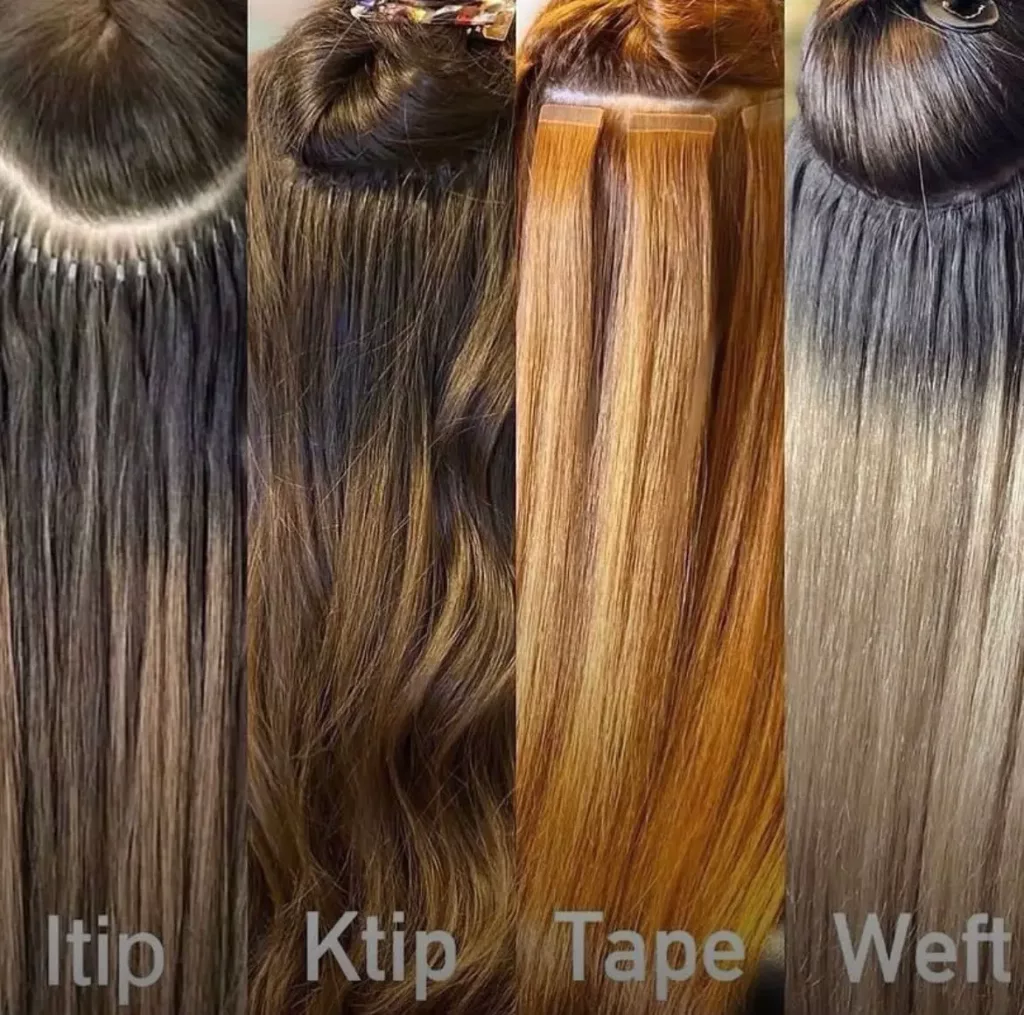
types of permanent hair extensions?
Map the head. Choose the tool. Match density, lifestyle, and finish. Then choose material grade.
Semi-permanent options include tape-ins, keratin/fusion tips, I-tips/nano rings, and beaded/sewn wefts such as hand-tied or genius wefts. Each type solves a different problem.
Side-by-side selection matrix
| Type | Best for | Avoid when | Pros | Cons |
|---|---|---|---|---|
| Tape-in | Quick seamless blends, fine roots | Very oily scalps, heavy swimmers | Flat, fast, reusable hair | 6–8 week cadence; tape care needed |
| Keratin/Fusion | Max invisibility, ponytails | Very fragile hair with breakage | Long wear, tiny bonds | Time-intensive; tips are single-use |
| I-tip/Nano | No heat or adhesive | Extremely slippery hair without texture | Reusable tips, clean removals | Bead visibility if mapped too high |
| Hand-tied weft | Lightweight rows, layered density | Very coarse hair needing heavy weight | Feather-light, comfortable | Cannot cut weft; trained sewing |
| Genius weft | Cut-anywhere flexibility | Ultra-sensitive scalps needing micro-light rows | Thin base, strong, cut to fit | Slightly heavier than hand-tied |
| Machine/Flat weft | High-volume builds | Very fine hairlines | Durable, fewer rows | Thicker base; placement matters |
Material guidance: For luxury installs, full cuticle single-donor hair offers the best styling freedom, color control, and reuse. Lower grades shorten life and increase after-sales work.
How long does a permanent hair extension last?
This question usually means on-head wear between salon visits. Set clear windows at consultation and on the aftercare card.
Wear windows: tape-ins 6–8 weeks; beaded/sewn wefts 6–10 weeks; I-tips/nano 8–12 weeks; keratin/fusion 12–20 weeks. Growth, scalp oils, and care change the exact number.
Triggers for a move-up
- Growth gap makes attachments visible or leveraged.
- Angle shift changes lay and comfort.
- Shed-hair matting above bonds/rows if move-ups are delayed.
- Slip from products, sweat, or incorrect brushing.
Factors that shorten the window
- Fast growth (1.5–2 cm/month).
- Heavy oils and conditioners at the root.
- Frequent swimming and high-sweat training.
- Sleeping with wet hair; skipping brush-throughs.
Safe booking policy
Pre-book the move-up at install. Send an automated check at week 4–5. Protect the client’s hair by refusing late move-ups that push beyond safe windows.

Sometimes the question means how long the hair itself lasts across reuses. That is the hair asset lifespan. It depends on material and processing.
Full cuticle single-donor hair can deliver 12–18 months across multiple reinstallations with proper care. Mid-grade Remy averages 3–16months. Non-Remy or heavily acid-washed stock often lasts 1–3 months.
Why premium lasts longer
- Intact cuticles reduce friction and breakage.
- Gentle processing preserves cortex strength for heat and tone.
- Single-donor consistency stabilizes texture and color across batches.
Cost-per-wear logic
Higher entry price drops quickly when the same hair survives several move-ups with fewer callbacks. This is why luxury salons standardize premium grades for core services.
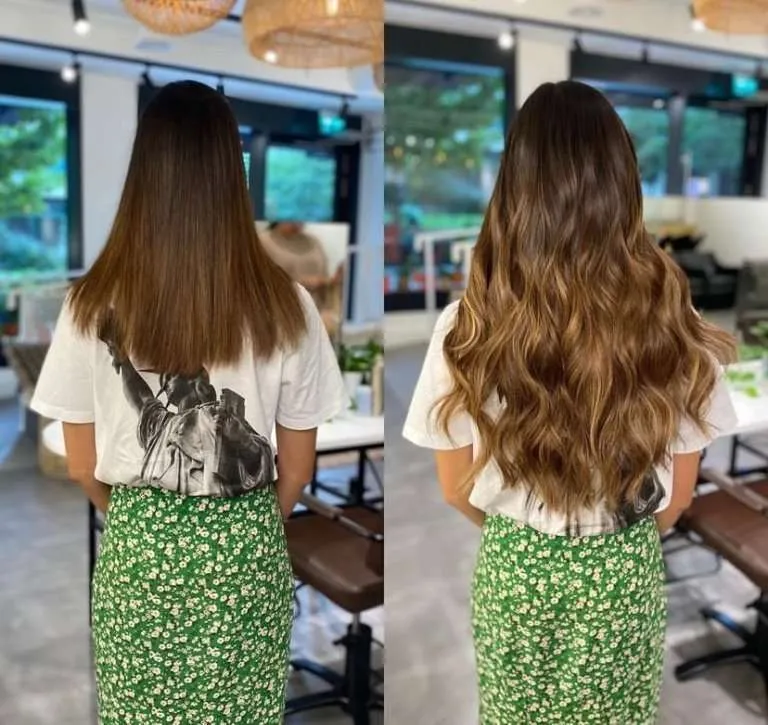
How to make hair extension last longer?
Longevity comes from system, not luck. Control what you can: material, install hygiene, root care, product rules, and maintenance discipline.
Use premium hair, map clean sections, keep roots product-free, set a move-up window, and teach clients simple daily habits. Add sunscreen and water-quality protocols.
Salon SOP (recommended)
- Material: Full cuticle single-donor hair for semi-permanent installs.
- Prep: Clarify roots; dry 100%; no conditioners at the base.
- Mapping: Small, even sections; correct tension; rows follow head shape.
- Documentation: Photo map of rows/bonds for quality control and future audits.
Client rules that stick
- Wash: 2–3× weekly. Aim shampoo between attachments.
- Products: Sulfate-free shampoo; condition mids-to-ends only; avoid oils/silicones at roots.
- Heat: ≤180–200°C (350–390°F) with protectant; never heat bonds or tapes.
- Brush: Loop or soft mixed-bristle; support roots; brush morning and night.
- Sleep: Dry before bed; loose braid or silk scrunchie; silk pillowcase.
- Swim/Gym: Pre-wet, leave-in on mids-ends, braid, rinse after; chelate weekly in hard-water or swim seasons.
- Sunscreen caution: Formulas with Avobenzone and Octocrylene can discolor blondes (pink/orange tips). Use mineral SPF on exposed areas and keep chemical SPF off hair.
Maintenance cadence
- Tapes 6–8 weeks; Weft rows 6–10 weeks; I-tips/Nano 8–12 weeks; Keratin 12–20 weeks. Pre-book before the client leaves the chair.
do permanent extensions damage natural hair?
Safety is the first concern for owners and educators. The method is not the risk; mis-mapping, wrong tension, delays, and poor aftercare are the risks.
With correct section size, safe tension, timely maintenance, and professional removal, semi-permanent extensions do not harm healthy hair. The wrong habits cause problems.
Risk controls inside the salon
- Consult density and history: Screen for active shedding, breakage, scalp issues.
- Section size vs. load: Match weight to the base hair. No over-tight bonds.
- Row tension: Stitch snug, not strangled. Curved rows follow head shape.
- Edge zones: Stay back from hairline and nape to protect fine hairs.
- Removal protocol: Use proper removers and tools; detangle shed hair at the scalp before re-install.
Risk controls at home
- Daily brushing to release shed hair above attachments.
- Dry roots after every wash to prevent swelling and slip.
- No sleeping wet to avoid mats.
- Move-ups on time to prevent leverage and tangles.
When to pause installs
- Postpartum shedding, medical treatments, or acute scalp conditions. Offer clip-ins or halos until shedding stabilizes.

My opinion
Manufacturer’s viewpoint (Hibiscus Hair): “Permanent” should always be framed as semi-permanent with maintenance. For reliable results and fewer after-sales issues, pair trained application with full cuticle, single-donor hair. This combination improves client satisfaction, reduces callbacks, and lowers cost-per-wear for salons and brands.
FAQ
How long between visits?
Tapes 6–8 weeks; Weft rows 6–10 weeks; I-tips/Nano 8–12 weeks; Keratin 12–20 weeks.
Which method looks most invisible?
Keratin/fusion tips and well-mapped tapes offer the flattest, most discreet roots.
Which method builds the most volume fast?
Beaded/sewn weft rows (hand-tied or genius) for large, even volume.
Do extensions damage natural hair?
Not with correct mapping, safe tension, on-time move-ups, and professional removal.
Can clients swim and work out?
Yes, with pre-wet + leave-in, braids, rinse after, and weekly chelation during heavy swim seasons.
Why did blonde extensions turn peach/pink?
Likely sunscreen with Avobenzone or Octocrylene, or mineral build-up. Switch to mineral SPF and chelate.
What material is best for semi-permanent installs?
Full cuticle, single-donor human hair for the best styling, color control, and reuse.
Can tape-ins be reused?
Yes. Replace adhesive, clean the base, and reinstall if the hair quality remains high.
What brush should clients use?
Loop or soft mixed-bristle brush; support roots while brushing.
Conclusion
Extensions are not permanent. Choose the right semi-permanent method, use full cuticle hair, teach simple care, and keep maintenance on schedule to deliver safe, long-lasting results.

